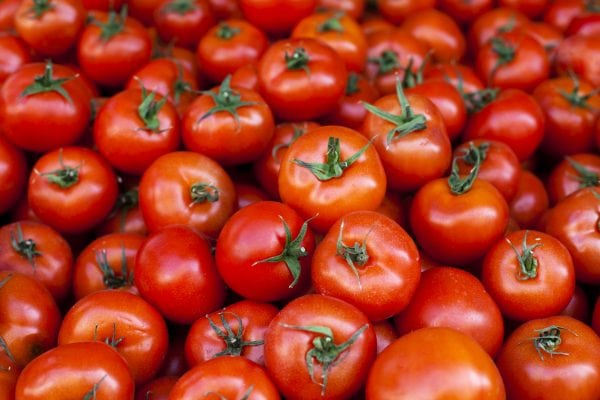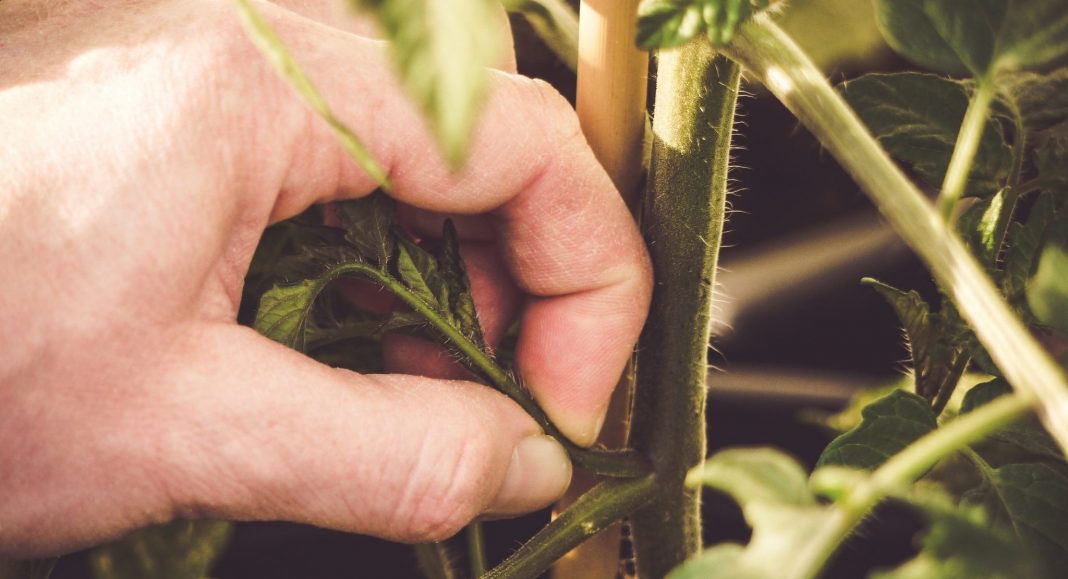AUBURN UNIVERSITY, Ala.—Tomatoes are a southern garden staple. Many gardeners are always looking for ways to grow a bigger, better tomato. While pruning tomatoes is not necessary during regular growth and production, it can make a difference.
Dani Carroll, an Alabama Cooperative Extension System regional home grounds, gardens and home pests agent, said pruning tomatoes is about balance.
“When we mention pruning tomatoes, we are talking about the removal of some of the suckers,” Carroll said. “The sucker is the small shoot that grows at about a 45-degree angle at the node where a tomato branch grows from the stem.”
Tomato Suckers are New Plants
 While many may believe the sucker on a tomato plant is just vegetative growth zapping energy from a plant, the sucker is actually a new tomato plant.
While many may believe the sucker on a tomato plant is just vegetative growth zapping energy from a plant, the sucker is actually a new tomato plant.
“The sucker will produce foliage and fruit just like the existing plant,” she said. “When we prune a few of the suckers, we may eliminate a little fruit that may drag the ground, but we produce larger fruit above.”
By pruning, Carroll said gardeners are also opening up the plant canopy near the ground to allow more air flow.
Pruning
Carroll said when pruning tomatoes, it is important to note whether the tomato plants are determinate or indeterminate varieties. Determinate varieties will grow until the plants produce a flower bud at the growing tip. The plant will stop growing and produce tomato fruit over the next four to six weeks.
Indeterminate tomatoes will continue growing until cold weather kills the plant. However, insects and diseases can still kill the tomato plant before a frost.
“Indeterminate tomatoes vine indefinitely, and it is not uncommon for them to grow upwards of six feet,” Carroll said. “Pruning for each type is advisable.”
Determinate Pruning
Carroll said gardeners with determinate tomatoes should prune all suckers from the ground up to the first flower cluster. This results in a two-stemmed plant.
“It is best to remove suckers when they are small—or two to three inches in height—so the main stem is not injured when the sucker is removed,” Carroll said. “Some tomatoes are more vigorous growers than others, so it may be necessary to remove suckers more than one time.”
Indeterminate Pruning
Gardeners can remove more sucker growth on indeterminate tomato varieties than on determinate ones. When pruning, remove sucker growth from the ground up to the second flower cluster.
“Some gardeners ask if they can remove all of the suckers on a tomato plant,” she said. “The answer is yes. You can remove all of the suckers. This would result in a one-stemmed vine. Some greenhouse tomato producers may choose a similar growing method.”
While a grower can remove all of the suckers, it is best to only prune off the lower suckers. If a grower removes all of the suckers, the fruit can sun-scalded easily because there are no leaves to protect the fruit.
More Information
The Alabama Extension publication Backyard Tomato Production is a great resource for information on growing tomatoes. More information can be found by visiting Alabama Extension online or by contacting your county Extension office to connect with a regional Extension agent.
The Alabama Master Gardeners are also available by calling 1-877-ALA-GROW (252-4769). With a wealth of knowledge running the gamut from azaleas to yard pests and soil, the Alabama Master Gardeners—armed with research and backed by regional agents—are ready to help you.

















